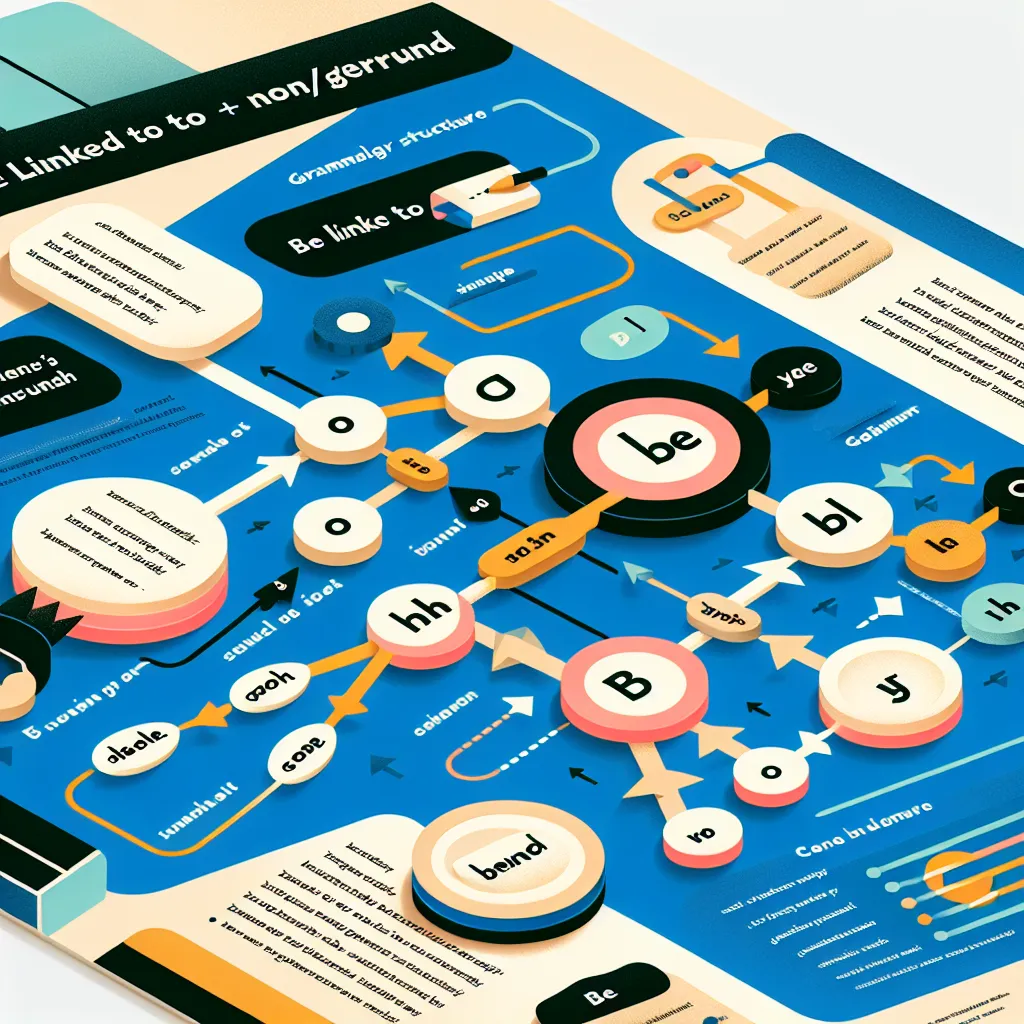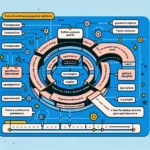The “be linked to + noun/gerund” structure is a crucial grammatical pattern that frequently appears in IELTS examinations. Understanding and effectively using this structure can significantly enhance your performance across all sections of the IELTS test. In this comprehensive guide, we’ll explore the intricacies of this construction, its usage in various IELTS contexts, and provide practical examples to help you master it.
Understanding the “Be linked to + noun/gerund” Structure
The “be linked to + noun/gerund” structure is used to express a connection or relationship between two concepts, events, or phenomena. It’s a versatile construction that can be employed in both academic and general contexts, making it particularly valuable for IELTS candidates.
Basic Formula and Grammar Rules
Formula: Subject + be + linked to + noun/gerund
This structure consists of four main components:
- Subject: The person, thing, or concept being discussed
- Be: The appropriate form of the verb “to be” (is, are, was, were, etc.)
- Linked to: The fixed phrase indicating a connection
- Noun/Gerund: The concept, action, or thing to which the subject is connected
 IELTS Grammar Structure
IELTS Grammar Structure
Examples in IELTS Context
- “Climate change is linked to increasing global temperatures.”
- “The rise in obesity rates is linked to changes in dietary habits.”
- “Economic growth is often linked to improved education systems.”
- “The company’s success was linked to innovative marketing strategies.”
- “Stress levels are frequently linked to working long hours.”
In each of these examples, the structure clearly illustrates a connection between two concepts, which is essential for developing coherent arguments in IELTS Writing and Speaking tasks.
Applying “Be linked to + noun/gerund” in IELTS Writing
Task 1: Academic Report Writing
In IELTS Academic Writing Task 1, you may need to describe trends or relationships between data. The “be linked to” structure can be particularly useful in this context.
Example:
“The increase in car ownership is closely linked to rising income levels in urban areas. As the graph shows, there is a strong correlation between average household income and the number of vehicles per family.”
Task 2: Essay Writing
For Task 2 essays, this structure can help you articulate complex relationships between ideas, which is crucial for developing well-reasoned arguments.
Example:
“The prevalence of mental health issues among young adults is often linked to excessive use of social media. Studies have shown that increased screen time and constant exposure to curated online personas can negatively impact self-esteem and overall well-being.”
Enhancing IELTS Speaking with “Be linked to + noun/gerund”
In the Speaking test, using this structure can demonstrate your ability to express complex ideas fluently and accurately.
Part 2: Long Turn
Topic: Describe a significant change in your local area.
“One significant change in my hometown is linked to the rapid development of technology. Over the past decade, the increasing availability of high-speed internet has been linked to a boom in remote work opportunities, which in turn is linked to a growing population as more people choose to relocate to our area for its quality of life while maintaining their careers.”
Part 3: Discussion
Question: How do you think technology affects education?
“The integration of technology in education is closely linked to improving learning outcomes. For instance, the use of interactive software is linked to increased student engagement, while access to online resources is linked to broader knowledge acquisition. However, it’s important to note that the effectiveness of technology in education is also linked to proper training for teachers and equitable access for all students.”
Common Errors and How to Avoid Them
-
Incorrect verb form:
- Incorrect: “The problem are linked to poor management.”
- Correct: “The problem is linked to poor management.”
-
Confusing with similar phrases:
- Incorrect: “Obesity is related to unhealthy eating habits.”
- Better: “Obesity is linked to unhealthy eating habits.”
-
Overuse:
While “be linked to” is a useful structure, overusing it can make your writing or speaking repetitive. Vary your language with synonymous expressions like “is associated with,” “is connected to,” or “correlates with.” -
Forgetting the gerund form:
- Incorrect: “Stress is linked to work long hours.”
- Correct: “Stress is linked to working long hours.”
Achieving Higher Band Scores with “Be linked to + noun/gerund”
To achieve higher band scores in IELTS, it’s crucial to use this structure accurately and appropriately. Here’s how you can elevate your usage:
Band 6-6.5:
Basic use of the structure with simple connections:
“Air pollution is linked to increased respiratory problems.”
Band 7-7.5:
More sophisticated use with complex ideas and varied vocabulary:
“The exponential growth of e-commerce is inextricably linked to the widespread adoption of smartphones and the increasing reliability of mobile internet connections.”
Band 8-9:
Advanced use with nuanced expressions and academic-level vocabulary:
“The multifaceted nature of climate change is inexorably linked to a complex interplay of anthropogenic factors, ranging from industrial emissions to deforestation, necessitating a holistic approach to mitigation strategies.”
Conclusion
Mastering the “be linked to + noun/gerund” structure is an excellent way to enhance your IELTS performance across all sections of the test. By understanding its construction, practicing its application in various contexts, and learning to use it at different levels of sophistication, you can significantly improve your ability to express complex relationships and ideas. Remember to use this structure judiciously, varying your language to maintain engagement and demonstrate the full breadth of your English proficiency. With consistent practice and attention to detail, you’ll find that this versatile grammatical tool becomes an invaluable asset in your IELTS preparation and performance.


